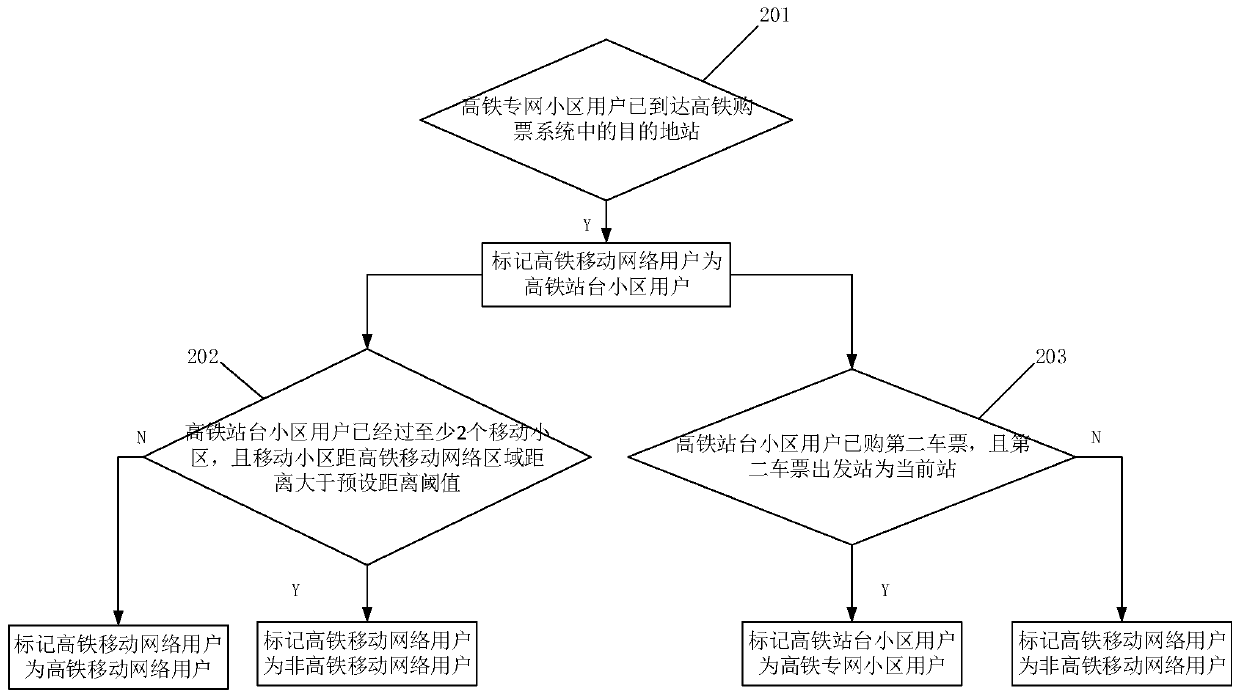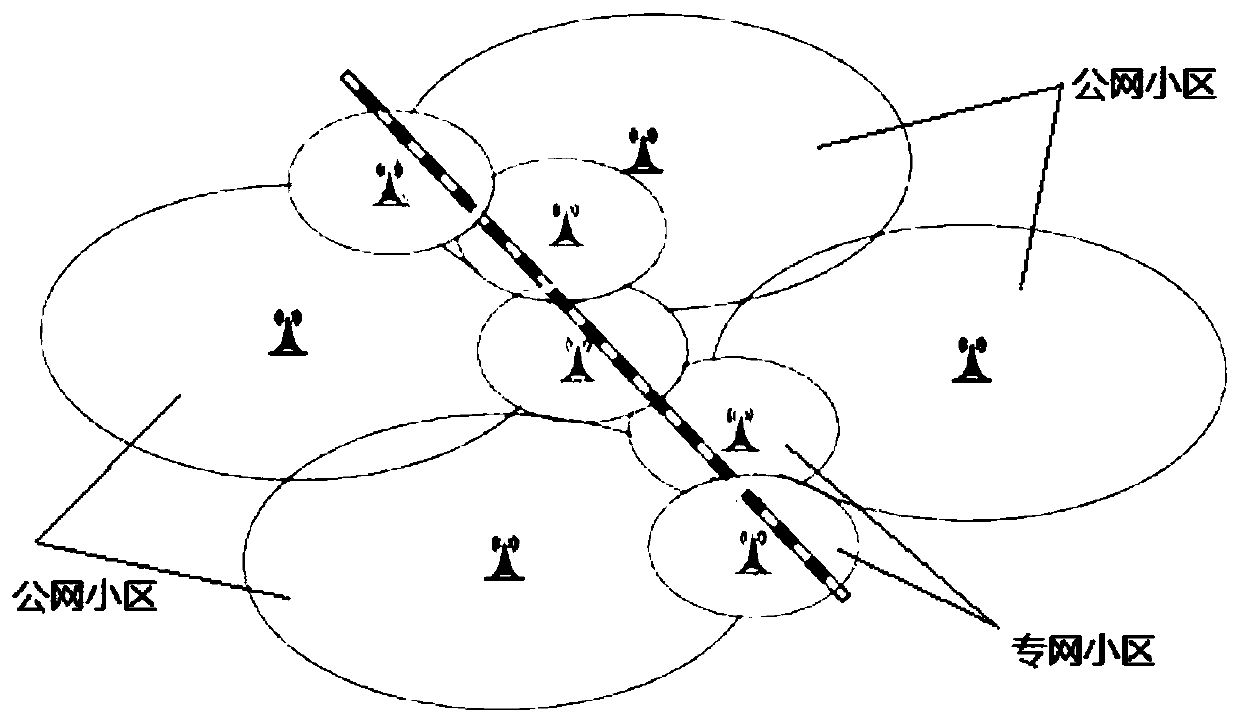High-speed rail mobile network user identification method and system
A mobile network and user identification technology, applied in network data management, electrical components, and location-based services, etc., can solve the problems of excessive number of users, frequent identification, and high mobility, so as to improve identification efficiency and improve user identification. Efficiency and accuracy, the effect of reducing consumption
- Summary
- Abstract
- Description
- Claims
- Application Information
AI Technical Summary
Problems solved by technology
Method used
Image
Examples
Embodiment 1
[0045] As of 2018, the high-speed rail transported 2.005 billion passengers. With the rapid development of wireless communication technology, wireless terminal equipment has become an essential tool for people's daily travel. Wireless communication uses mobile digital cellular technology to build a network. During the high-speed movement of terminals, higher requirements are placed on the switching speed of cellular base stations / cells. The LTE network switching speed supports 350km / h. In addition to switching technical requirements, high-speed rail network coverage (line coverage, platform coverage, waiting hall coverage, square coverage, etc.) is also an important factor; Mobile terminal signal quality perception has different requirements.
[0046] Therefore, it is necessary to accurately identify and locate high-speed rail mobile terminal users, identify and classify different types of high-speed rail users, so as to better provide different services for different types o...
Embodiment 2
[0061] High-speed rail users will bind their mobile terminal phone numbers when purchasing high-speed rail tickets through the high-speed rail ticketing system, and mobile terminal users who have purchased high-speed rail tickets will most likely use the purchased high-speed rail tickets to travel. Therefore, when performing high-speed rail mobile terminal user identification, the mobile terminal identity information of all ticket-buying users of high-speed rail trains can be obtained according to the data in the high-speed rail ticketing system, as one of the basis for high-speed rail mobile network user identification.
[0062] The method in Embodiment 1 is only for judgment and identification of mobile terminal users who purchase tickets through the high-speed rail ticketing system and enter the station normally. For some special user behaviors in the high-speed rail scene, other methods need to be used for more detailed identification.
[0063] In the high-speed rail applic...
Embodiment 3
[0085] In Embodiment 1, only the high-speed rail ticket-buying users are identified and classified. However, in the actual scene of high-speed rail operation, users who use the high-speed rail mobile network include not only ticket-buying passengers, but also train staff and station staff, or use Passengers with a mobile terminal whose number is different from the mobile terminal number bound in the purchased system. Such mobile terminal users also need to be identified and classified, and switched to different high-speed rail mobile network cells according to user types to meet the different communication needs of different users.
[0086] The distribution of high-speed rail private network communities and public network communities is as follows: image 3 shown.
[0087] For slow-moving non-high-speed rail mobile network users, such as users walking in the station, they can be classified and identified according to their current location and stay time. Mobile terminal user...
PUM
 Login to View More
Login to View More Abstract
Description
Claims
Application Information
 Login to View More
Login to View More - R&D
- Intellectual Property
- Life Sciences
- Materials
- Tech Scout
- Unparalleled Data Quality
- Higher Quality Content
- 60% Fewer Hallucinations
Browse by: Latest US Patents, China's latest patents, Technical Efficacy Thesaurus, Application Domain, Technology Topic, Popular Technical Reports.
© 2025 PatSnap. All rights reserved.Legal|Privacy policy|Modern Slavery Act Transparency Statement|Sitemap|About US| Contact US: help@patsnap.com



